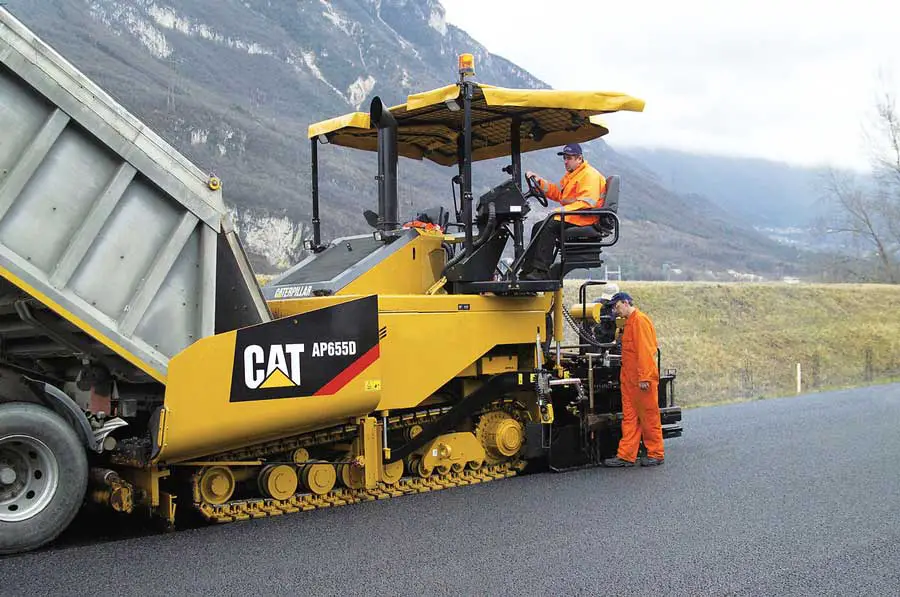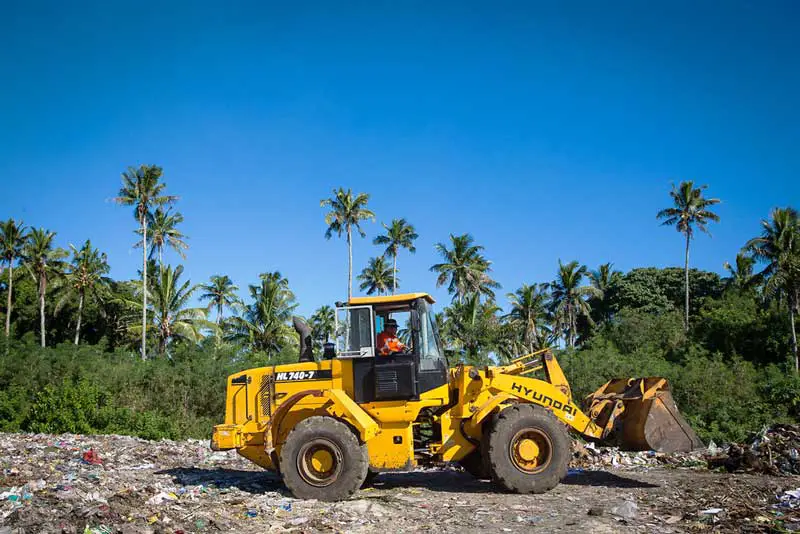Heavy equipment often used for high-rise building projects is Tower Crane (TC). This tool has a function as material handling equipment both vertically and horizontally.
Next, we will review the types of tower cranes, their components, how to select and operate a tower crane, and an effective design for a tower crane.
What is a Tower Crane?
Tower Crane (TC) is heavy equipment that works to lift and move material or cargo both vertically and horizontally. The mechanism works on the principle of ropework to lower the load to a predetermined location.
The upper part of the tower crane mast consists of a swivel arm and a winch that serves to pull the load up or down. And what is special is that the winch can move back and forth along the boom. The winch can rotate 360 degrees from the arm of the tower crane.
Parts of Tower Crane
The parts of the tower crane are:
- Mast or Main Post: The vertical post that is placed on the base or base.
- Boom or jib: the arm of the tower crane that consists of an iron structure. The length of the boom frame arrangement determines the horizontal reach of the tower crane that can be achieved.
- CounterJib: A component of the tower crane that works to balance the jib (boom). Equipped with this component, the tower crane and tie bar can move in balance.
- Carriage: a tool used to move the load along the jib. The cart is equipped with a hook or hook that can be moved vertically to lift material.
- Hoist: The part of the tower crane that functions as a lifting and lowering tool.
- Alternates: that is, a steel wire or cable and part of the hoist. This alternate diameter can be changed based on user needs and can also be added (double alteration), based on needs in the field.
Types of Tower Cranes
The types of tower cranes that are frequently used are Self-erecting tower cranes and tethered tower cranes, the following is an explanation of both:
1. Self-erecting Tower Cranes

This autonomous tower crane is installed outside the building, without being attached to the building structure. The advantage is that the installation and dismantling time of this type of tower crane is faster than that of a tied tower crane.
The body of the tower crane is held firm and anchored on a planned base. The use of self-erecting tower cranes is limited to a height of 100 meters above ground level.
2. Luffing Tower Crane

If the height of the building construction reaches more than 100 meters above ground level, the tower crane structure must be tied to the building structure.
The joint is made at a certain height by using steel. This joint aims to reduce the buckling length of the tower crane structure due to wind or wind loads hitting the crane structure.
3. Hammerhead Tower Cranes

Hammerhead tower cranes are one of the most widely used crane types in the world.
This hammerhead tower crane is used to retract and extend the trolleys while working with a suspended load without changing the height of the load.
Read more: Construction vrhicles names
How to Operate Tower Crane
In use, it is not uncommon for tower cranes to have problems that reduce the productivity level of the tool.
That is why precision is required when choosing this type of heavy equipment, although it is very difficult to find 100% of the equipment in good condition.
The following are the factors to consider when choosing a tower crane, whether you want to rent or buy it:
- Pay attention to the specifications of the tool, including the location of the maximum load in the arm’s reach.
- Consider the conditions of the project you will be working on, such as the project area, the height of the building, the area of the building, and the characteristics of the material to be transported by the tower crane.
In the meantime, here’s how to use a tower crane effectively:
Tower cranes can lift various types of materials. Building materials that are generally transferred for high-rise construction jobs such as multiplex and iron concrete.
The first time the project manager makes a material transfer schedule. These materials have been prepared in advance in certain places, such as in a workshop. In addition, the operator will operate according to the schedule that has been made.
Tower cranes are also used as a tool for casting columns, beams, and floor slabs. So its use requires caution so that the concrete mix can stay on target.
The tower crane operator can operate this heavy equipment according to the project manager’s instructions, starting with lifting loads of material (lifting), moving materials (trolleying), securing the transported load to remain on top, and transporting the load to the specified values. place (turning and traveling).
Tower Crane Capacity
Meanwhile, the load capacity of the tower crane has a maximum load limit that depends on various factors. If the tower crane transports material beyond its capacity, there is a risk of it tipping over.
Therefore, the size and weight of the transported material must comply with the provisions and it is necessary to pay attention to factors such as the following:
- The influence of wind force or load on the location of the work area on the tower crane tool.
- Load oscillation when material load moves
- Material transfer speed
- The engine’s ability to brake during movement.
Effective Layout Design for Tower Crane
The purpose of determining the layout of the tower crane is to achieve the most effective layout to ensure the safety and comfort of work for the workers.
The following is the most good and effective tower crane design:
- The placement of tower cranes must be able to reach the entire area of the building in which you are working.
- The tower crane placement location must provide a minimum 10-meter wide clearance for the installation and demolition area, as well as the entry and exit route for the crane vehicles.
- Tower cranes should not be erected on top of other facilities, such as septic tanks, bridges, and tanks.
Tower crane placement to avoid are:
- The tower crane placement cannot reach the entire building.
- Placement of tower cranes that ignores the space for the entry and exit of material transport vehicles, which can make the work process difficult.
- Placement of tower cranes that do not consider the location of the placement of materials so that the performance of the tower crane is not effective.
Tower cranes are widely chosen as heavy construction equipment because their height can be adjusted to the height of the building and it also has a wide reach to speed up job completion.
The acquisition of tower cranes is absolutely necessary for the implementation of large projects, such as shopping centers, departments, etc. With the use of tower cranes, it is expected that the implementation of building construction projects can be completed more quickly.
That’s a review of what a tower crane is, its types, and how to use a tower crane effectively. The correct use of tower cranes supported by the skill of the operator greatly affects the productivity of this tool. Of course, this will affect the speed of the construction work duration, so you can save costs and time.
Related: Difference between crane and hoist ???



